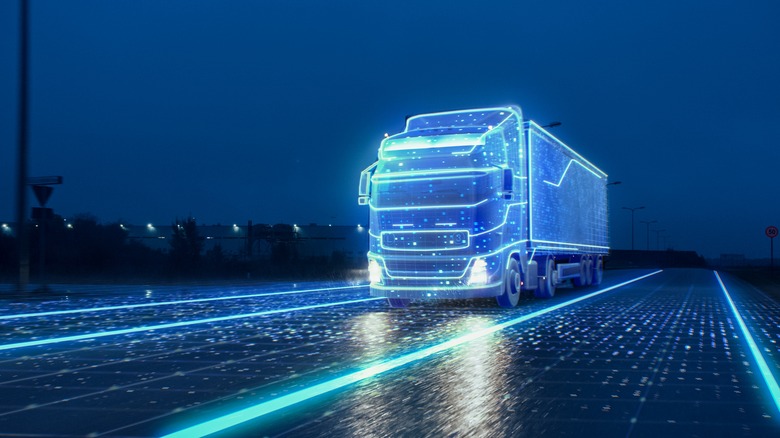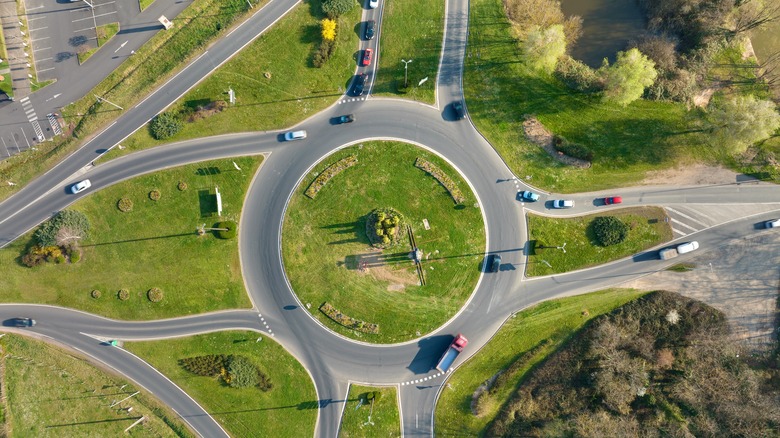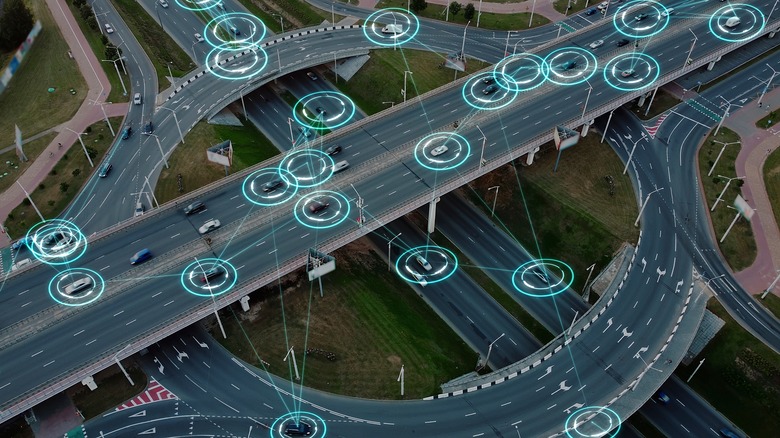You May Not Have Traffic Lights In The Future
Traffic lights are an ever-present part of road safety in the modern world. Drivers make their way through a series of intersections to get to their destination. The U.S. Department of Transportation reports that there are almost 330,000 traffic signals at intersections across the United States, and that three-quarters of these light arrays would be well-served with technological improvements to make them more efficient.
It seems that lights are rarely timed well, and they pose unique challenges to motorcycle riders who commute at their own schedule and may easily get stuck at a stalled red. But red lights, and traffic light signals altogether may soon be a thing of the past. The future of travel is moving at a breakneck pace, and with the introduction of autonomous vehicles looming on the horizon, the need for a safety measure that helps manage roadway mobility and deliverer drivers and their passengers to their destination unscathed may soon be outdated. Technology has revolutionized the way that people move. Green Car Congress notes that fuel economy has seen a sharp rise over the decades, and a transition to EVs that is taking place now will only continue this improvement.
The truth is, however, that the way people think of roadway access is changing, and it's possible that smart car design may do away with the need for lights altogether in the very near future.
Road design has been moving steadily away from traffic lights for years
Road designers have argued the relative differences between traffic light-driven intersections and roundabouts for decades. But the verdict is in: Roundabouts are cheaper to build, and they reduce the incidence of collisions by 37%, according to ACS Engineers. Roundabouts aren't universally more efficient at moving traffic — with notable points being scored by intersections with traffic lights in high speed areas. However, in residential or urban developments, the use of a roundabout is nearly always a more efficient and safer option than a traffic light installation.
Rather than enticing drivers to try and beat a sudden shift to yellow or red, and stepping on the gas as soon as a light shifts back to green (potentially endangering any lingering intersection crossers), roundabouts force drivers to slow down and proceed with caution through the curving exchange, regardless of how many other cars might be on the road. In one sense, the battle for traffic management has already been won as cities are opting for roundabout construction at record levels (via The New York Times).
We Forum also notes that roundabouts are far more energy efficient, reducing waste produced by idling vehicles. Coupled with a shift to greener vehicles more broadly, the use of roundabouts to manage the flow of traffic throughout cities and towns across America might just be part of the green shift.
With EVs and autonomous vehicles, the need for lights may become antiquated
Aside from the relative strengths of other traffic flow options over traffic lights, the point may soon be altogether moot. Indeed, the rise in capability of autonomous vehicles may just relegate the utility of traffic signals and safety management installations to the tomes of history. MIT researchers recently published a study surrounding the idea of "slot-based intersections" that will maximize vehicular efficiency (via The Boston Globe). Of course, this futuristic vision of transportation relies on a totally driverless road environment, which may be a long way off, to be sure.
The concept isn't radical, in fact similar features can be seen in many science fiction films (such as 2004's I, Robot, via IMDB; even though Will Smith's Del Spooner continuously takes direct control of his car and crashes multiple times!).
This new vision for transportation involves a sensor array on traveling vehicles that interact with one another in a continuous (and thus far, hypothetical) Vehicular Internet of Things. Instead of waiting for your turn to proceed through an intersection, your car would adjust its speed relative to other vehicles on the roadway and proceed at a safe speed and vector through the network of other cars on the road without ever having to stop. The process would be automated and entirely seamless.
Of course, this remains a stretch goal for transportation managers seeking safer cars and roads, but the future certainly appears bright.


